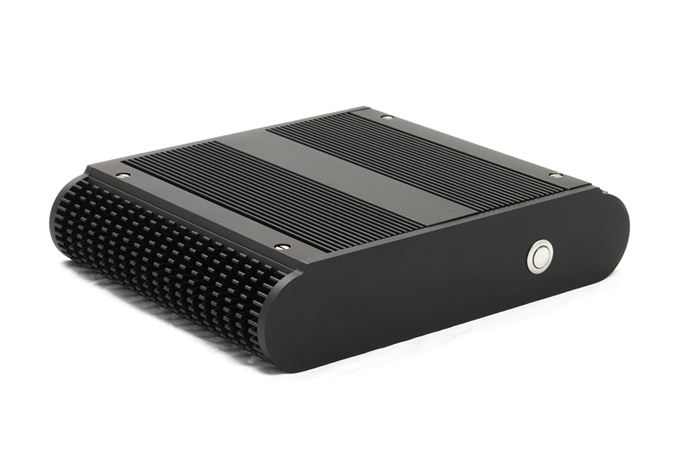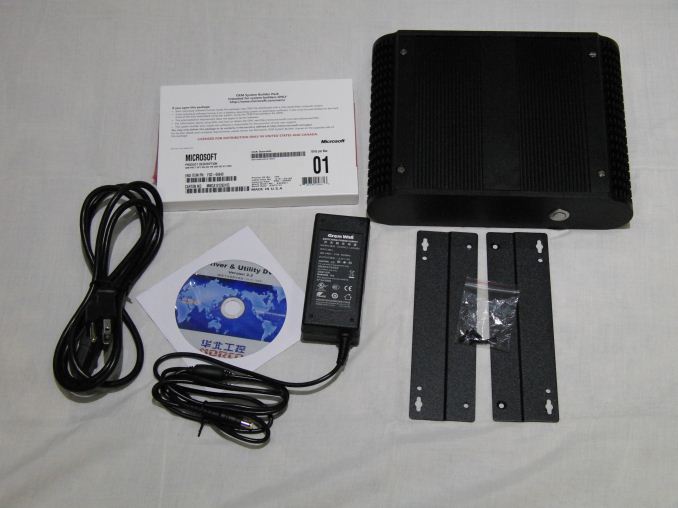HABEY BIS-6922 Fanless Ivy Bridge Industrial PC Review
by Ganesh T S on August 13, 2013 9:00 AM EST- Posted in
- Industrial PC
- Ivy Bridge
- Passive Cooling
- Habey

Introduction
Industrial PCs come with stringent requirements that are not satisfied by generic PCs. It is customary for builders to use active cooling in order to ensure that the components are in proper working order. Ventilation slots are also provided to keep airflow up. Chassis size is also not always a concern. However, these flexibilities are not always possible in industrial PCs. Operating environments for such systems usually call for passive cooling, dust resistance, rugged nature and minimal size (read, mini-ITX).
We reviewed the Aleutia Relia last year. Today, we are adding another fanless Ivy Bridge PC to the list, the Habey BIS-6922. The unit was launched late last year. Unlike units meant for the traditional PC market, embedded and industrial units are more focused on long term support and reliability rather than the latest and greatest that the silicon vendor has to offer. So, it is not surprising that Ivy Bridge-based industrial computers are seeing a strong presence in the market only now, after long-term validation by the manufacturers. The high level specifications of the BIS-6922 are available in the launch piece. In the table below, we have a quick overview of the configuration of the review unit sent by Habey.
| Habey BIS-6922 Industrial PC Specifications | |
| Processor |
Intel Ivy Bridge Core i7-3720QM (4 x 2.60 GHz (3.60 GHz Turbo), 22nm, 6MB L2, 45W) |
| Chipset | Intel QM77 |
| Memory | 2 x 4GB DDR3-1333 |
| Graphics |
Intel HD Graphics 4000 650 MHz / 1.25 GHz (Turbo) |
| Disk Drive(s) | 60 GB Intel SSD 330 |
| Networking | 2 x Gigabit Ethernet |
| Audio |
Microphone and headphone/speaker jacks Capable of 5.1/7.1 digital output with HD audio bitstreaming (HDMI) |
| Operating System |
Windows 7 Professional 64-bit (Retail unit has choice of OSes including barebones option) |
| Pricing (As configured) | ~$1500 (Varies depending on customization) |
| Full Specifications | BIS-6922 Specifications |
Our review unit came with the above internal configuration. In addition, we had the installation disk for a OEM copy of Windows 7 Professional x64, a 60 W DC power adapter, mounting plates with screws and a driver and utility CD. I wonder why companies bother with these optical discs when the product itself carries no optical drive. With Flash becoming more economical day-by-day, it might make better sense to bundle these in a USB stick instead of a CD or DVD.
The first section of the review will deal with the setup impressions and teardown of the system. We will take a close look at the thermal design. This is followed by results from our performance evaluation. The numbers will help up get an idea of the relative performance of the unit compared to other PCs with low power consumption. A separate section on thermal performance is also included.











63 Comments
View All Comments
prophet001 - Tuesday, August 13, 2013 - link
Something that will behind installed in other machines and used industrially should be tested at temperatures more extreme than 74 to 78 degrees Fahrenheit.azjeep - Tuesday, August 13, 2013 - link
Agreed...I am in Tucson, Arizona. This would be great for our shipping clerk but he works indoor but with a large rollup door right next to his office. In the summer his office easily exceeds 90 degrees.Lord 666 - Tuesday, August 13, 2013 - link
Is your business a sweat shop?Samus - Tuesday, August 13, 2013 - link
Exactly, this will be inside a kiosk. And considering how fast it cools off, by the time it is powered off and removed from the kiosk it'll be stable enough to manage. That's the remarkable part.ganeshts - Tuesday, August 13, 2013 - link
That is an artificial test case meant to determine how hot the case would become. I hardly expect average consumers to fully load both CPU and GPU 24x7.By the way, what other fanless mITX configuration is there with such a powerful CPU?
UpSpin - Tuesday, August 13, 2013 - link
Why should you buy such a powerful CPU if you won't use it. I can imagine, that maybe some movie/music editor would like a fanless dead silent system. Whenever he renders the scene, all four cores will get loaded. The GPU is just a IGP, which won't add that much to the overall temperature. So it's just too hot!You also have to keep in mind that inside it will be equivalently hot, causing a reduce life of the used parts.
The design is just poor. They would have needed something like the new Mac Pro, which, in my opinion, is the best design for a passive system, because it works like a chimney and causes air flow both inside and out.
Dentons - Tuesday, August 13, 2013 - link
Agreed. What's the point of having an i7 if it can't be used without subjecting the user to burn hazards and sending the components to an early death? If the outside of the case reaches 155 F, how hot does the RAM get? The SSD? The interior heat was probably well above the recommended tolerance of those and other components.It's not like there aren't use cases for quiet, dust resistant, but powerful machines. A video producer could certainly use a perfectly quiet machine and would definitely run the CPU at full throttle for hours on end. A site architect or movie crew might also find such a combination more beneficial than an i7 laptop.
Most industrial users would probably find a Celeron, Pentium, or i3 more than adequate. This may be a fine case with those lesser chips, but since it wasn't tested, we just don't know. The i7 clearly seems a bit much for their product. They should probably have delivered a more typical customer build for testing, instead of trying to push the envelope with Intel's latest, greatest.
airmantharp - Tuesday, August 13, 2013 - link
Actually, Haswell seems more suited for this product- but Ivy is cheap (for now). The system can hold it's own without external help, and provides the perfect balance of performance for it's size and passive cooling. With even a little ventilation, it'd be perfect for running at full load, and few would really stress it that much.Still, I do like the idea of using lesser SKU's; but that's not what this design is for.
xrror - Wednesday, August 14, 2013 - link
7th sentence into the article. "So, it is not surprising that Ivy Bridge-based industrial computers are seeing a strong presence in the market only now after long-term validation by the manufacturers."?
jabber - Wednesday, August 14, 2013 - link
In reality how many people really need a i7 full stop?